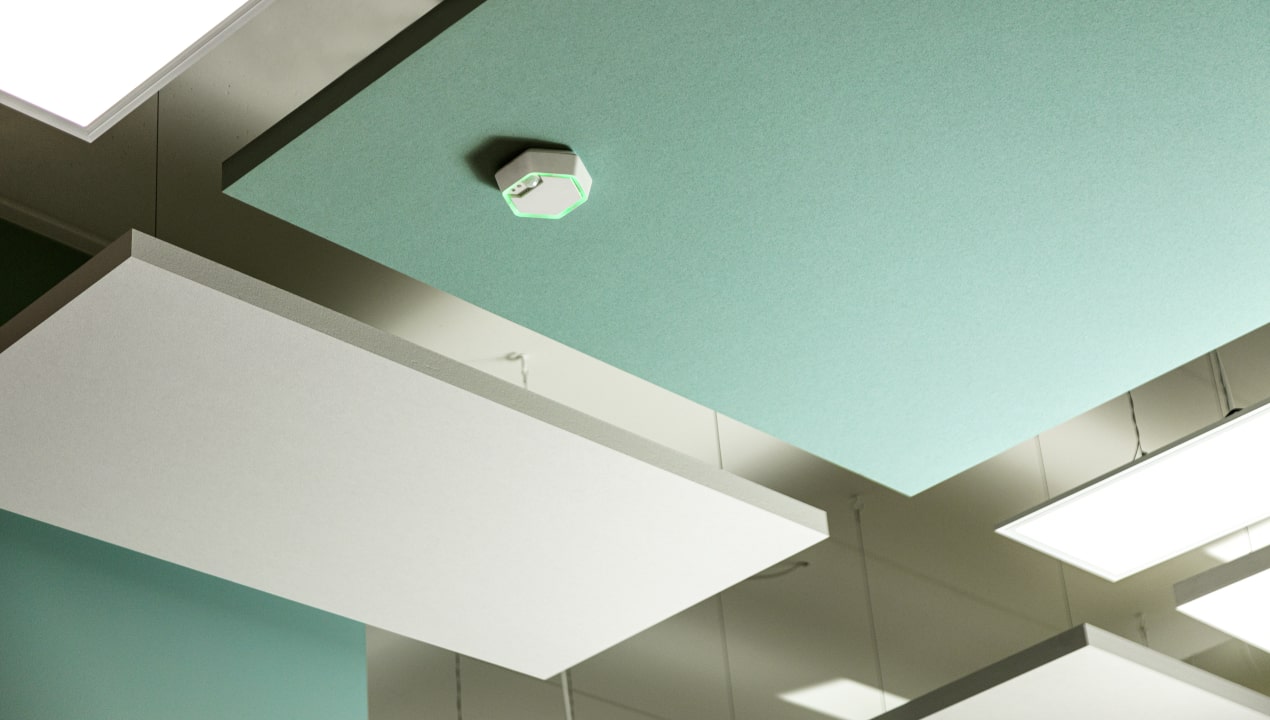Did you know that buildings are responsible for 40% of the entire energy consumption in the European Union? Lighting, fresh air in the rooms, a.k.a. ventilation, and the heating and cooling of the rooms are the biggest energy consumers in buildings. Smart home automations help to reduce electricity consumption, as heating, ventilation and lighting are switched on based on the necessity. Therefore, the new technology plays a vital role in making buildings more energy-efficient and our future a little greener.
Smart-managed systems are beneficial for another reason — they help make the indoor climate of rooms healthier. This is possible thanks to the Bisly smart sensors that constantly monitor the CO2 levels as well as adjust the lighting to the right intensity and tone fit for working. These aspects are the basis of feeling good and healthy.
1. Smart lighting reduces electricity consumption up to 80%
Smart-managed lighting works on a need basis and helps improve the ability to work whilst increasing the sense of well-being. Smart-managed lighting means that the lights are only switched on when there are people in the room (presence sensor) and the intensity of the lights is regulated by a smart lux-sensor which takes into consideration the light coming in from outside as well. During brighter times — in spring and summer, when there’s more light coming into the room through the windows, LED lights working at 30-40% intensity are sufficient enough to ensure a level of lighting needed for the well-being of people in the room (based on the example of the new 2500m2 Utilitas’ green office that was given the LEED certificate).
Even bigger savings come from managing the lighting of the entire building – including corridors and outdoor lighting – in a smart and need-based way. For example, lights can be kept on a lower intensity when it’s darker outside (e.g. at 20%) to create a safer outdoor area, or adjust the lights with the help of presence sensors to switch on when there are people in the area.
2. Smart ventilation saves 25-30% of electricity
Ventilation consumes electricity to keep the engine working and to heat up the air coming in from outdoors. In order to not blow -10 degree air from the outdoors to the indoors during winter, the air has to be preheated to 20 degrees. As we live in the North where it’s cold for a big portion of the year, heating the incoming air makes up for a lot of our electricity consumption.
The greatest electricity savings come from smart ventilation, that automatically keeps the necessary level of fresh air in the room, but heats the air on a need basis. The input to change the working speed of the ventilation comes from the CO2 sensor. When no one is at home, the ventilation works on minimum speed (about 20%). As more people enter the room and the CO2 level rises, ventilation automatically adjusts its work speed to be faster at first and then slower again. The biggest energy savings come from the need-based managing and controlling of the ventilation.
Read more from the research article „Demand controlled ventilation indoor climate and energy performance in a high performance building with air flow rate controlled chilled beams “ in Science Direct magazine by Kaiser Ahmed, Jarek Kurnitski and Piia Sormunen.
3. By having a consistent overview of their energy consumption, people adjust it by 15-20%
In a smart home the owner has a stable overview of their energy consumption and can thus adjust the consumption accordingly. Research shows that once the people see how big the consumption is, they reduce it – e.g. unplug an unnecessary device from an outlet or lower the room temperature. A person living in a non-smart building receives the electricity bill once a month, but has no overview of the changes in their consumption or any discrepancies. They have no detailed overview of their energy consumption throughout the months.

